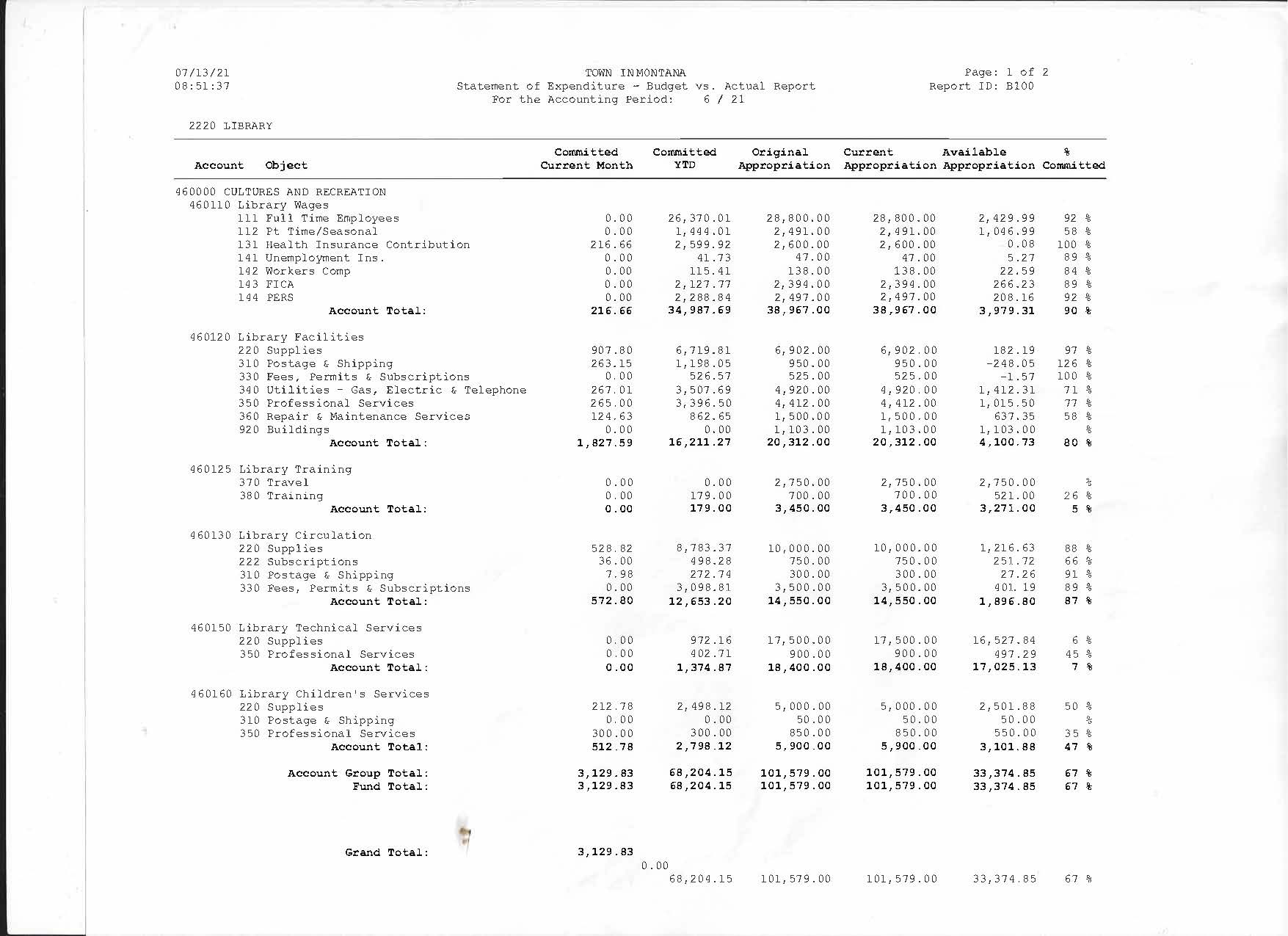Building Budgets and Reading Financial Statements
Completion requirements
View
"Normal" Expenditures
The director will collect and provide information to the board about operating expenditures for the library. In building a budget, you will need this information to understand ongoing expenditures and how much to calculate “normal” operating expenses.
- Personnel costs are the biggest portion of your budget. Calculate how much it will cost to increase salaries – if you are going to give staff a raise. Find out if there are any increases in benefit costs – like increases for health insurance or retirement.
- Check on any contractual costs the library might have. This includes things like an annual fee for the Montana Shared Catalog, Overdrive/MontanaLibrary2Go, OCLC, etc.
- Analyze how much utilities like sewer, water, phone, electric, etc. have cost the library in the last 5-6 years. An average of six years of total costs can often be an accurate estimate of what the library will need in the coming years. If you know of increases in fees or costs, add them to the total expense for that line item.
- Identify how much you want to spend on items like library materials, programming, and any other non-fixed items. Take into consideration the library’s strategic plan and any goals the library has. Does the budget reflect those goals? Are resources being put towards those goals?
- Review how much was spent on building maintenance and repairs in the last 5-6 years. What is the average? Does that number seem like a good amount to budget for the coming year? Do you have other known repairs that should be included?
- Add in the wish list items. It may be necessary to add only the top 1-2 items.

Image: Expenditure report example.